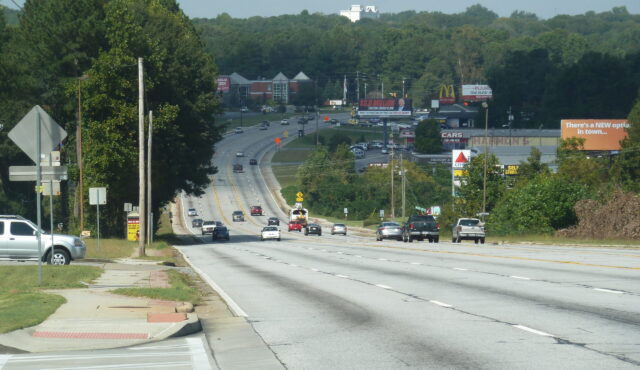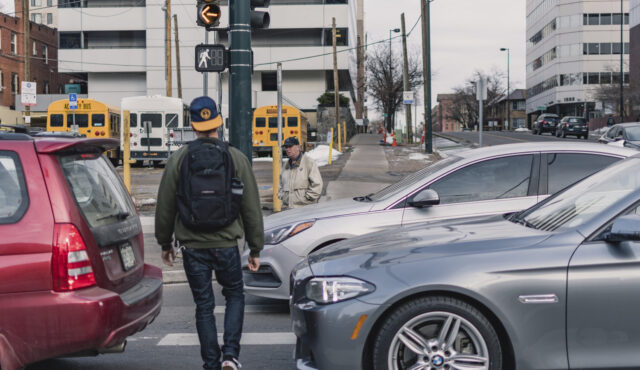President Biden has signed the $1.2tn Infrastructure Investment and Jobs Act (IIJA), also known as the Bipartisan Infrastructure Deal (BID). The legislation, which reauthorizes our nation’s surface transportation programs, has been accompanied by a wide variety of hot takes on what it does for equity, sustainability, jobs, the economy, and sometimes even transportation. Our hot take is that this is a once-in-a-generation chance for the United States to change the trajectory of our dreadful history of traffic deaths and injuries.
The timing is important. On November 21, we recognize World Day of Remembrance for the 1.35m annual global victims of traffic violence, including more than 40,000 people in the United States. Indeed, traffic deaths here are rising to levels we haven’t experienced for a generation, led by surging numbers of pedestrian fatalities. Vehicles are getting bigger and heavier every day; they are being driven faster and more aggressively than ever before. It feels as if we are at a real crossroads in our relationship with vehicles and the technology that is quite literally driving them.
At the urging of groups such as the Road to Zero Coalition, Vision Zero Network, and Families for Safe Streets, Congress has written legislation with the leadership, funding, and programmatic opportunities to change the way we approach traffic safety in the United States.
Adopting the Safe System approach
Language is critical. The IIJA changes the language in key highway safety sections from “accident” to “crash.” The Safe System approach to traffic safety is explicitly written into the definition of the Highway Safety Improvement Program and the entire fabric of traffic safety plans and programs from this point forward. It sends a clear message that our approach to traffic safety must change.
Overhauling crash reports
Everyone in the active transportation field understands the frustration of trying to embrace a data-driven approach to traffic safety with fundamental flaws in our crash reporting system. Unreliable and inconsistent crash reporting means data is often two-years behind, incomplete, and flawed. The IIJA sets aside $150m a year to overhaul the crash reporting and data transfer programs managed by the States and NHTSA. This could be a big first step towards a crash reporting system that supports a Safe System approach.
Accountability and Transparency for States
The IIJA requires every state to complete a Vulnerable Road User Safety Assessment within the next two years, and to integrate the assessment into their existing Strategic Highway Safety Planning (SHSP) process. At the same time, each State’s SHSP and triennial Highway Safety Programs (for non-infrastructure projects and programs) will be published on a new USDOT website, complete with action items and performance measures.
Local Vision Zero Action Plans
A new $200m a year competitive grant program (Safe Streets and Roads for All) will fund regional/local comprehensive safety action plans “commonly referred to as a Vision Zero or Toward Zero Deaths plan.” Funding is available for creating an action plan, developing activities for projects and strategies, and implementing projects and programs in the plan.
Additional funding for Complete Streets
States and Metropolitan Planning Organizations are required to use 2.5% of their planning funds to adopt complete streets policies or standards, develop a complete streets prioritization plan, develop multimodal transportation plans, address travel demand and congestion through alternatives to new highway capacity, improve the safety of pedestrians and bicyclists, and support transit-oriented development.
Safety Funds for Speed Reduction
Eligible activities for funding under the Highway Safety Improvement Program (HSIP) are expanded to explicitly include traffic calming and measures to reduce vehicle speeds, protected bikeways and intersections, pedestrian hybrid beacons and bicycle traffic signals.
Minimum Funding in High Bike/Ped Crash States
States where 15% or more of fatalities are vulnerable road users must spend 15% or more of the HSIP funds on HSIP projects that address the safety of vulnerable road users. This begins to address a longstanding inequity in the use of these safety funds for roadway projects that result in increased motor vehicle speeds.
Funding for Non-infrastructure Projects
Up to 10% of HSIP finds can be used for “specified safety projects” that include promoting public awareness about traffic safety issues, evaluating projects, and supporting Safe Routes to School non-infrastructure activities.
Vulnerable Road User Research
FHWA has a big role to play in this new legislation. The agency is called upon, “to prioritize research on roadway designs, the development of safety countermeasures to minimize fatalities and serious injuries to vulnerable road users, and the promotion of bicycling and walking, including research relating to—
- roadway safety improvements, including traffic calming techniques and vulnerable road user accommodations appropriate in a suburban arterial context;
- the impacts of traffic speeds, and access to low-traffic stress corridors, on safety and rates of bicycling and walking; and
- tools to evaluate the impact of transportation improvements on projected rates and safety of bicycling and walking.”
This all sounds great, but it’s important to recognize that little is guaranteed. As with potential changes to environmental and equity outcomes, safety benefits will only be realized with sustained, deliberate focus and effort. That’s why there are so many “hot takes” on the IIJA that seem to be at odds with each other. The reality is that major changes to the way we do business (in this case, the way we address traffic safety) are difficult and often take decades.
We can’t afford to wait any longer to make these changes. The IIJA has the tools to re-write the U.S. traffic safety story for the better. We owe it to the people we remember on Sunday, as well as their families and friends, to do things differently and create a truly safe transportation system for us all.
Note: There’s a lot more in the legislation than just safety programs. Click here for a summary of key provisions. Check back for additional insights into different aspects of the far-reaching IIJA.



